Good Morning Team, and welcome to some more commentary on Jubilee Metals.
This post may be too long for email without being truncated, so for all videos/images, read it in browser.
I enjoyed a brief chat with CEO Leon Coetzer on Sunday, and will be hosting an investor call in the near future, putting your questions to the man who has changed Zambian copper, South African chrome, and polished public speaking.
Some of the numbers discussed in this interview were analysed by The Oak Bloke, who generally puts out some decent analysis that’s worth subscribing to - and I will be asking Leon to clarify the numbers soon.
Better still, the AGM was yesterday, leaving plenty to dissect.
For the wider Jubilee Metals investment case, click here.
But for those already in the know, let’s dive in.
Let’s start with the good news.
Even after the brutal sell-off (thanks Fidelity and Jupiter - you can check their numbers on LSEG’s FactSet), shareholders are up by almost a third over the past five years. Of course, we are still some way from the pandemic highs, but JLP may start to make headway in this direction with the sellers likely on fumes.
For reference, multiple sources indicate that the funds have been selling for regulatory reasons, and not because of any issue with JLP’s investment case. Jubilee happens to enjoy significantly higher liquidity than the average junior, so when a fund needs to raise cash, sadly the company gets in the crosshairs.
But now it’s time to rise.
South Africa delivers
Let’s consider the Q1 FY25 operational update, starting with South Africa. For reference, we should always start with South African operations, because while Zambian copper is the growth story, South African chrome and PGMs are the bread and butter that generates the revenue for now.
First up, the SA operations saw a Lost Time Injury frequency rate of just 2.09 injuries per million hours worked. This achievement is likely glossed over by many, but this level of continued safety is quite an achievement in the country - and also means reduced downtime.
The key numbers are all in production though - chrome concentrate production increased by 8% quarter-on-quarter to 455,381 tonnes - exceeding targeted production for the quarter, and coming very close to the magic 500,000 to hit long-term targets of 2 million tonnes per year. Meanwhile, PGMs hit guidance, rising to 9,328 ounces compared to just 7,828 ounces last quarter.
As expected, Leon is reviewing guidance given the improved figures (under promise, overdeliver is always the best policy), and commissioning of both new chrome processing modules is underway - which will boost output even further.
Zambia rises
In Zambia, perhaps the most important update to consider is the private power agreement - which was only made a couple of months ago by dint of new regulation - and ensures ‘a reliable and uninterrupted power supply and meeting demands at full processing capacity.’
This is a huge advantage; the drought in Zambia has been devastating to the point where many citizens are only getting electricity for three hours in every 24, and only at night. Yes, the rains have started, but the key man-made lake Kariba is at near record lows and the hydroelectric dam may need to shut for the first time in 65 years of operation.
Not only has Jubilee now got the power to keep running, it’s also secured further power to support the planned expansion of Sable's operations - and this is testament to the company’s operational power in the country.
But the big news on investor minds is that Roan’s commissioning is finally complete, with the front-end milling and floatation circuit fully integrated. Importantly, the front-end can also operate as a standalone - which is welcomingly flexible due to the ability to correct for variability in feed quality.
And JLP promises to finally ‘exponentially increase production in the coming quarters of FY2025’ now that power is no longer an issue.
Then we have the numbers:
‘Roan targets a stable run rate of 75,000 tonnes of feed per month (tpm) for the first three quarters of operation before increasing to 90,000 tpm of feed. Initial copper recovery from feed is targeted at 55% which equates to an equivalent copper production rate of 6,200 copper tonnes per annum (tpa) or 7,400 tpa of copper at the increased 90,000tpm from Roan alone.’
Breaking this down:
Copper in feed per year = Copper production rate / Copper recovery rate
Copper in feed per year = 6,200tpa/0.55 = 11,273tpa
Copper grade = (Copper in feed per year / Feed rate per year) x 100% Copper grade = (11,273 tpa /(75,000tpm x 12 months/year)) x 100% Copper grade = 1.26%
Before we continue, please enjoy this video of Phil in a hard hat, interviewing live at Roan over the summer.
Therefore, the implied copper grade of the feed material is approximately 1.26% - not bad. Later in the RNS, JLP notes that Roan’s processing capacity can be enhanced to a maximum of 13,000tpa assuming a 1.55% copper feed grade and 90,000tpm run rate - which must mean that either the process becomes more efficient the more material is processed, or the company expects the grade delivered to be processed will be higher by the time it ramps up.
Of course, JLP is also planning to increase copper recoveries to more than 70% using on-site leaching from H1FY26 (though getting leaching right always takes longer than estimates). This would equate to 9,500-13,000 tpa of copper from Roan depending on the feed grade.
To visualise how technically advanced this is:
JLP gets low grade, previously mined material from one of its projects that nobody else can process.
It then upgrades the material at the mining site, which nobody else can do.
It then processes the upgraded material at Roan to get the copper out, which was once thought impossible - in the process creating ‘tailings.’
These tailings will then further be processed though leaching to get even more copper (15%+ improvement from 55% to 70%+ is the implication, which would be a significant jump).
Consider the process in action:
Processing tailings of material that was already tailings in the first place is a new level of mining technology - and an excellent example of the R&D spend that keeps Jubilee one step ahead in a country swimming with majors with much deeper pockets.
In further operational updates:
Munkoyo Open-Pit mine operations were successfully ramped up to achieve a targeted 100,000 tonnes of mined run-of-mine for October 2024, with 250,000 tonnes mined during Q1 FY2025.
Newly acquired Project G (October 2024) commenced operations and produced first copper concentrate for refining at Sable on target.
Project Phoenix and Project L commenced operations and achieving targets to maintain Roan's initial feed rate of 75,000tpm of upgraded previously mined material.
Two further Open-Pit mining operations are being targeted with commercial trials of bulk samples scheduled for refining at Sable during Q3 FY2025.
Production Targets
Copper guidance remains on track to reach production guidance of between 5,850 and 7,500 tonnes - a mid target of 1,800 tonnes of copper units is set for H1 FY2025 ending December 2024, increasing to approximately 4,200 tonnes for H2 FY2025 ending June 2025 (6,000 tonnes total).
JLP is also on-track to achieve chrome concentrate production guidance of 1.65 million tonnes, and PGM production guidance of 36 000 ounces, though I consider it likely chrome guidance will be upgraded soon.
Leon enthuses:
In Zambia, we have made considerable strides to establish a solid foundation for our anticipated growth in copper production. The commissioning and ramp-up of both the Roan and Munkoyo projects have been completed, setting the stage for substantial increases in output…Our copper business is now positioned for exceptional growth.’
The CEO had previously implied in out last lengthy interview that the copper guidance could be upgraded as well - though this was a hope and not a promise. Keep an eye out on next quarter’s update.
Copper Technicals
Jubilee’s Zambian copper processing footprint now includes the Roan Concentrator and the Sable Refinery, with a combined in-country copper capacity over 25,000tpa.
The capital investment cycle for processing is nearing completion, with the focus shifting to expanding copper resources to maximise use of the increased processing capacity.
Initial copper production from Roan is approximately 520tpm with potential to reach 670tpm at a 75,000tpm feed rate - Roan processes previously mined material exclusively.
The Sable Refinery upgrade underway will serve as a dedicated facility for processing materials from shallow Open-Pit mining operations including the new Munkoyo and Project G sites, expected to complete by Q2 FY2026. Consider the sable cathode at 99.999:
The Munkoyo site started operations in July 2024, reached its monthly target of 100,000 tonnes by October 2024 with 250,000 tonnes mined in Q1 FY2025.
Of mined material from Munkoyo, 5,000 to 10,000tpm at minimum 2.5% copper grade is trucked directly to Sable - the copper grade expected to increase to 3.5% from Q3 FY2025
The remaining Munkoyo material is stockpiled for future processing with large-scale leaching trials beginning December 2024.
Total copper inventory from mining and processing has reached 3,538 tonnes.
Company increased its stake in Project G from 51% to 65% in August 2024 following due diligence. Project G aims to achieve a mining rate of 10,000tpm by February 2025, with an on-site pre-concentration facility capable of producing 3,000 tonnes of copper concentrate monthly with 10-15% copper.
First copper concentrate was produced at Project G in October 2024
The Large Scale Waste Rock Project is targeting 260 million tonnes of previously mined material with a new processing footprint similar to Roan
JLP is conducting an industrial trial of 15,000 tonnes to validate engineering and commercial assumptions, with a due diligence extension requested until January 2025 for results finalisation and partner confirmation.
I have a few comments: first, despite the protestation that the capital investment cycle is nearly over, I am certain Chambishi is still in play. The plant is in care and maintenance; JLP is hungry for processing power and has the resources to feed it. This just makes too much sense and one imagines a negotiation is going on behind closed doors.
Or not.
Part of what makes Zambian copper investment fun is the similarities to Cluedo.
And I’m not just talking about Jubilee.
I’d also note that some of the names of these code-named sites are becoming public knowledge. It’s hard to keep these quiet for long.
Further, I’m keen to see how Anglo American re-entering Zambia might fit into a JLP game plan. I have previously speculated that JLP is working with Vedanta on Konkola given the masses of low grade and previously mined material at site, and further, that Anglo may come in with financial investment for the project.
I am very happy with the Roan/Sable workhorse split - with perhaps the only bugbear being the length of time it’s taken to get cracking with the Waste Rock project with IRH.
IRH had originally planned to take on a majority shareholding in Konkola from Vedanta but abandoned these plans in July 2024 (Vedanta priced too high) - but has nevertheless bought a 51% stake in Mopani.
My assumption is that the waste rock project JV is close to Konkola - for context, the IRH deal with JLP was originally announced in mid-December 2023, shortly before news broke that IRH was pursuing Konkola. This would have made sense to IRH, because success could have been expanded to encompass Konkola tailings.
This may explain the potential delay - and it remains possible that IRH will partner at Konkola should no other suitor get involved (Vedanta needs the investment but wanted to sell 30% at double the price IRH was prepared to pay for 50%).
Anyhoo, speculation aside, this additional project has the potential to be game-changing all by itself. Chop chop.
AGM takeaways
I was not at the AGM, but these are comments from a selection of sources who were there.
Ergo, these are not gospel but can be seen as relatively reliable. I have only included information that has been confirmed by at least two sources.
Apparently, IRH has asked for a significant amount of due diligence so there may be room to negotiate with other potential partners. Perhaps whoever’s coming to help out at Konkola? Come on Duncan, time is money.
I joke. Sort of. This waste rock project should be able to support 50,000 tonnes of production and needs to get cracking.
On chrome, the margin (currently the key profit determiner for JLP) seems to be well protected - exposure to chrome prices is limited to 45 days, and feedstock is purchased for a 45 day period.
Technically, Jubilee is advancing the chrome just as much as the copper. It’s now close to producing ultra fine chrome; it used to be the case that under 150 microns was non-viable - but JLP is verging on 10 microns - and it’s very likely Jubilee could license this tech out. It’s also the key reason why production keeps increasing at a pace competitors cannot match.
Interestingly, there is a big pile of PGMs growing and the company retains rights to the Windsor partnership (though basket price would need to hit $1,5000 to make this work). At current rates, the stockpile would take seven years to process (not including Inyoni) - with JLP owning 60% of profits. And the stockpile will grow with the new modules.
I would comment that Jubilee are not the only ones stockpiling due to low prices - which makes a wider recover harder to see coming anytime soon. Just an opinion though - for balance, copper and chrome pricing should keep rising all being equal.
On Zambia, Sable should be at capacity by the middle of 2025 from projects M and G; project M being a significant resource, with 550,000 tonnes of lower grade copper at the project already stockpiled with an average grade of 1%. Higher grade material from the project at a 3% grade is going to Sable.
Perhaps crucially, Leon apparently noted that the current feed grade of Roan was averaging 1%. Given the stats in the RNS imply a feed grade of 1.26% rising to 1.55%, this means either a higher grade or improved processing must be in the works.
Key to the waste rock project - processing is available at Mopani - now majority co-owned by IRH.
Finally, there has been discussion of splitting the South African and Zambian businesses, to guard against potential M&A. Sometimes, it’s easier to write a cheque than try to do it yourself! However, this is not the plan (at present).
The bottom line
Others have crunched the numbers; what I know is that Jubilee has suffered from a serious sell-off through no fault of its own. Corporate progress has been impressive; now the operations need to start paying dividends.
The share price will look after itself.
But if I know Leon, a new capital cycle with Chamishi, Konkola and Mopani in play may be too tempting to ignore.






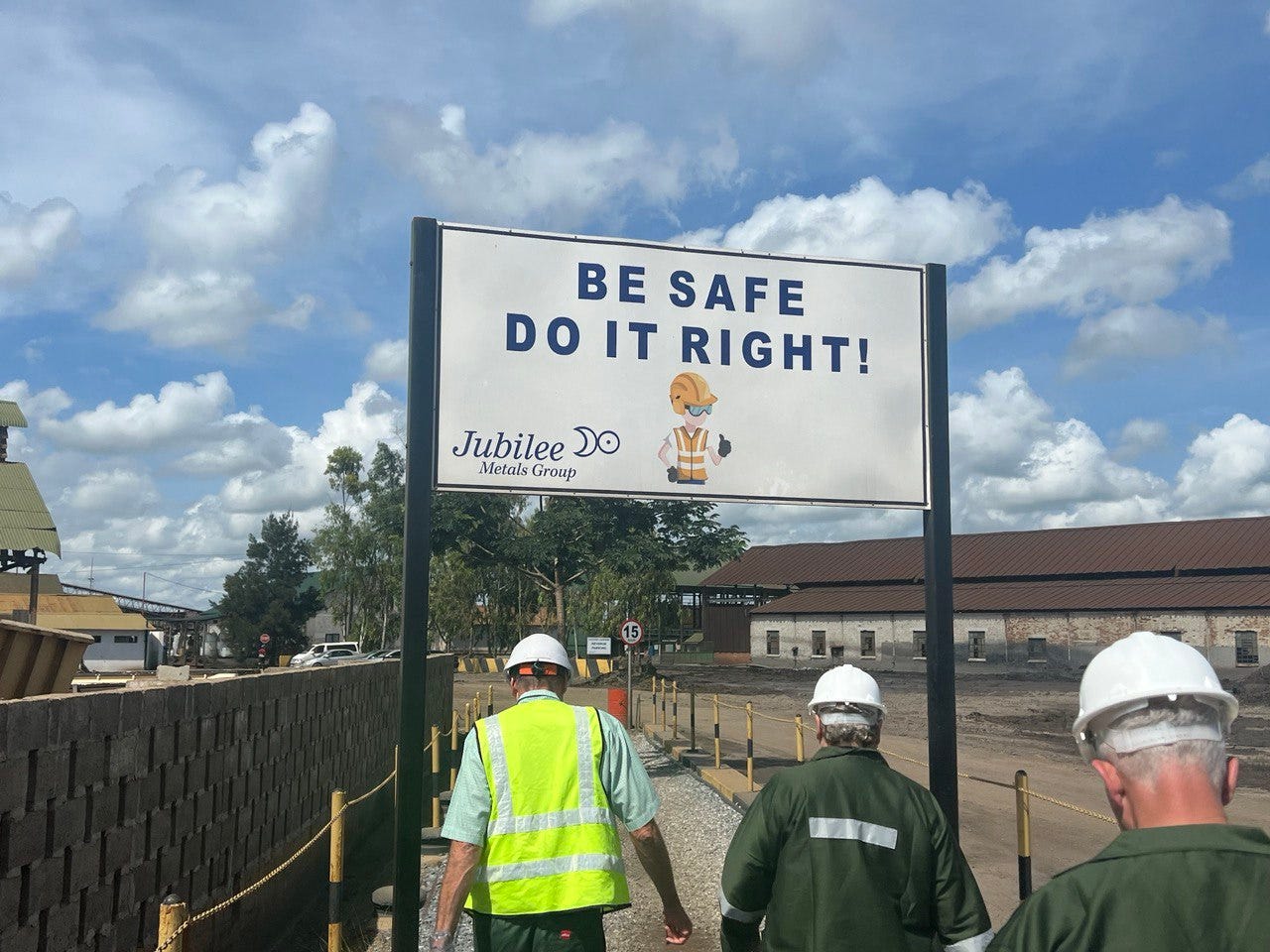
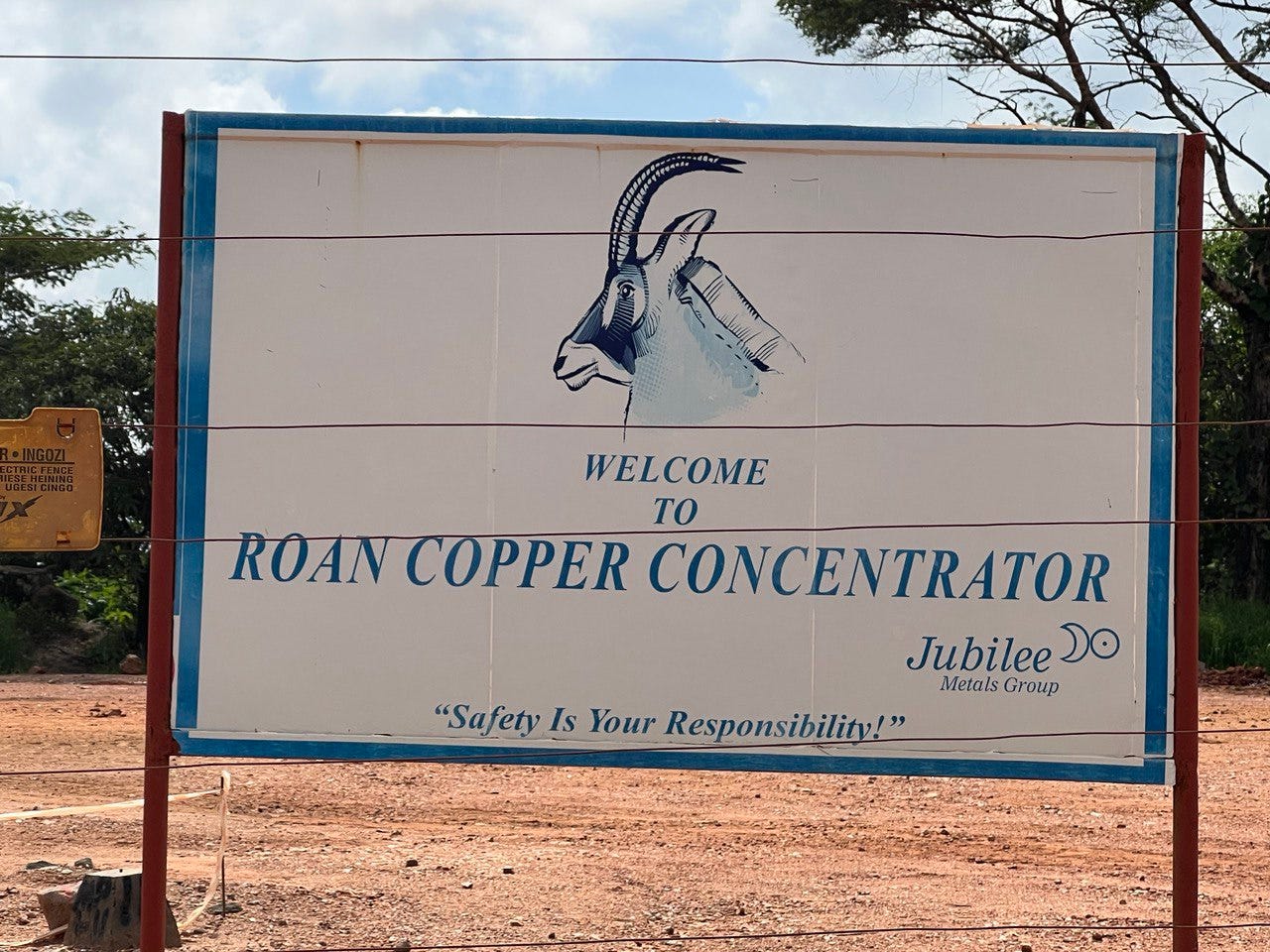
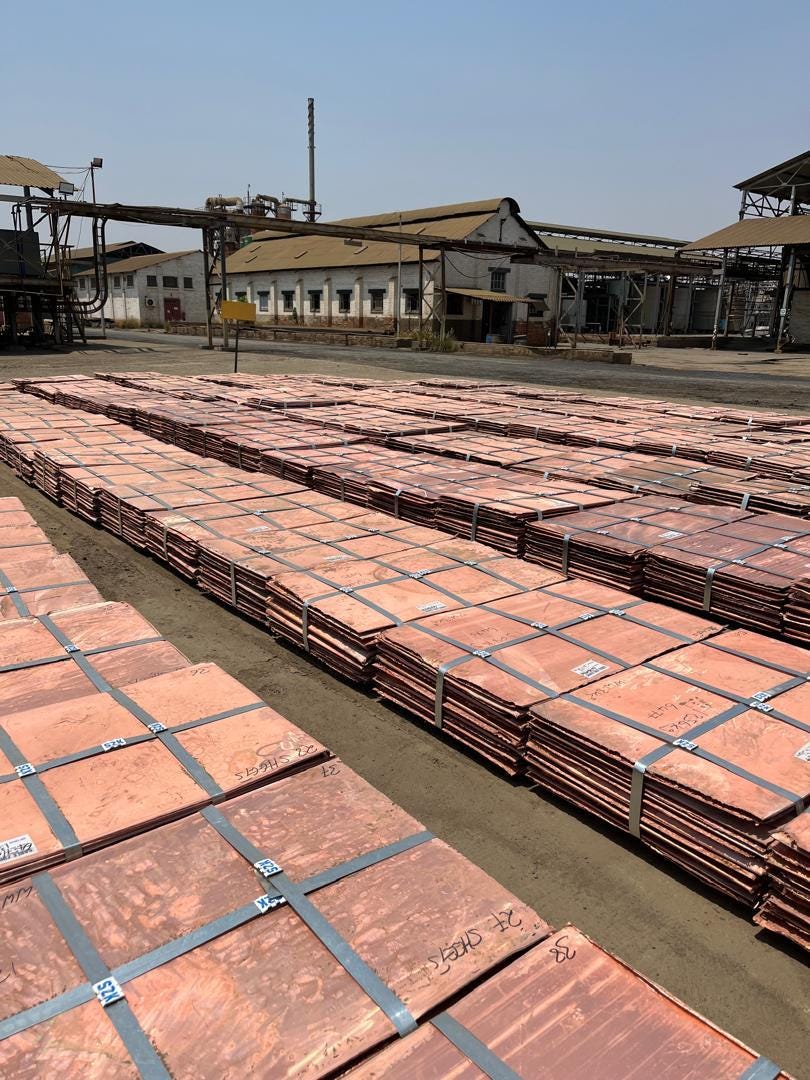
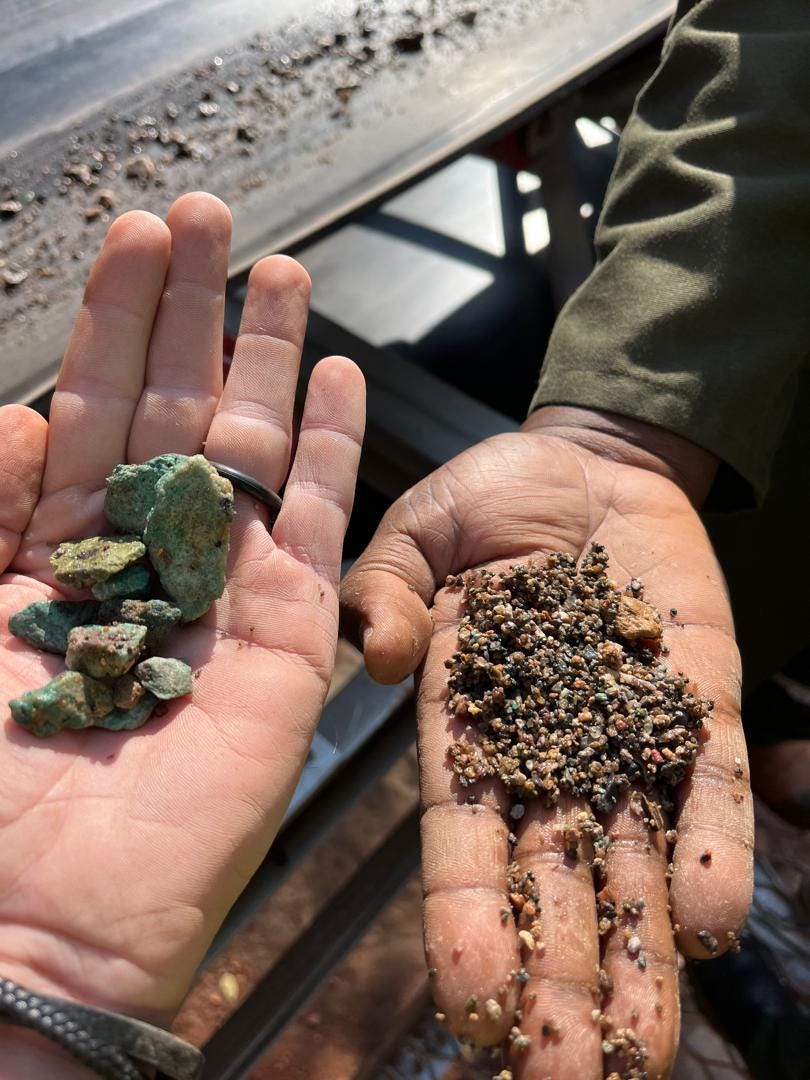
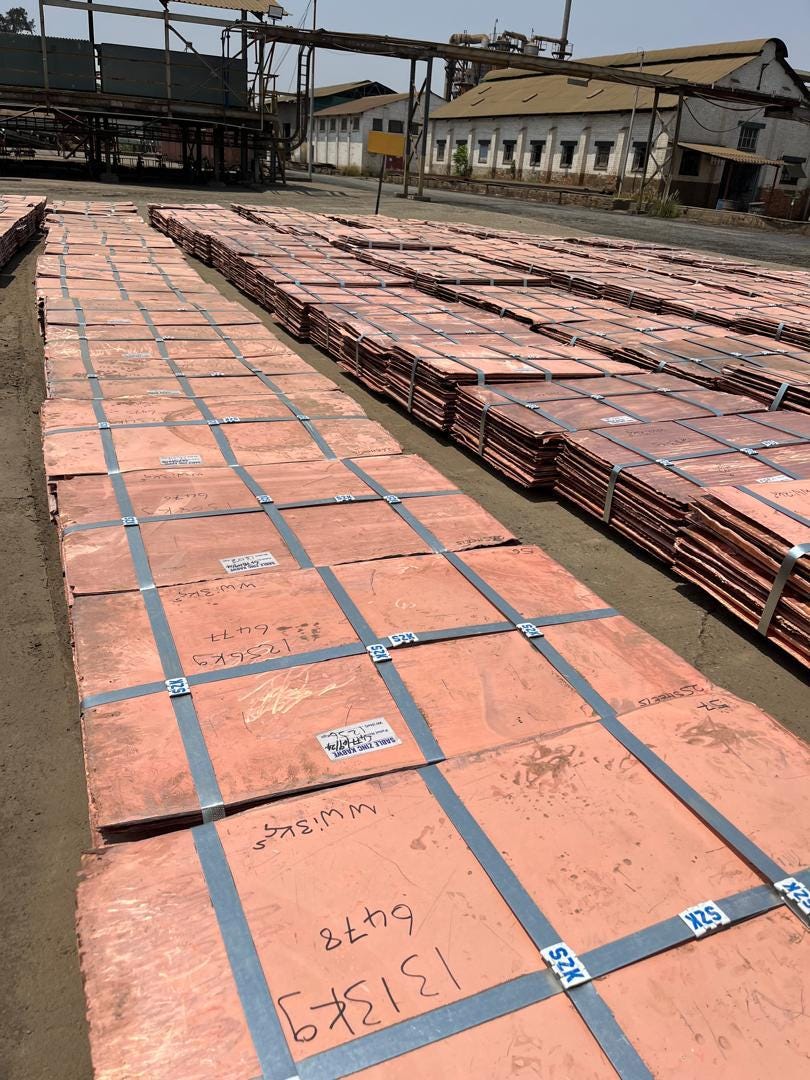
Hi Charles. Do you have a recording of Leon interview on 21 Nov ?
Hi Charles, thanks for the mention, and great article too. I'd be interested if you know what is the approximate % level below the copper LME the Copper Concentrate achieves? As you know much of the future growth would be Concentrate (unless they build another Sable!).
Taken from the Interim Report: "The decrease in the average revenue per tonne of copper unit is mainly because of the increased proportional sale of copper concentrate at a % below the copper LME which has the effect of lowering the revenue per tonne of copper unit. Sale of copper concentrates contributed to 57% of copper units during the period under review (FY2023: 24%)."
OB